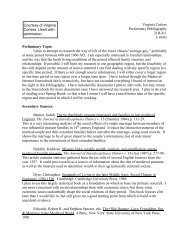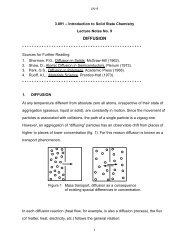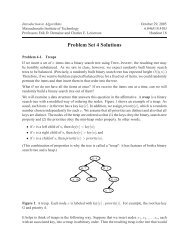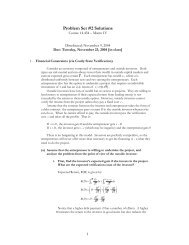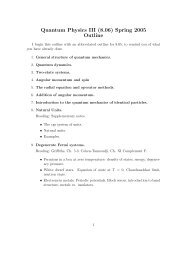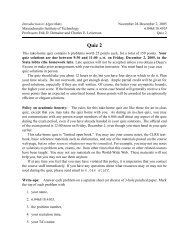Using Foreign Languages in the Middle Ages
Using Foreign Languages in the Middle Ages
Using Foreign Languages in the Middle Ages
Create successful ePaper yourself
Turn your PDF publications into a flip-book with our unique Google optimized e-Paper software.
always failed, lead<strong>in</strong>g to <strong>the</strong> use of vernacular languages. When possible, missionaries whose<br />
49 native languages were close enough to <strong>the</strong> target population were used. O<strong>the</strong>rwise, mis<br />
50 sionaries had to learn pagan languages onsite. Those who did often adopted sophisticated<br />
methods to successfully convert pagans. Missionaries adopted <strong>the</strong> rich oral traditions of<br />
pagan Germanic peoples to Christian stories and wrote <strong>the</strong>m down, both meet<strong>in</strong>g poten<br />
tial converts halfway and establish<strong>in</strong>g <strong>the</strong> vernacular literary traditions that were crucial to<br />
evangelization. They <strong>the</strong>n used <strong>the</strong> new vernacular texts to preach tailormade sermons to<br />
51 pagans <strong>in</strong> <strong>the</strong>ir own languages. Such efforts by missionaries, however, were still probably<br />
simply pragmatic measures taken to break down pagan cultural resistance – <strong>the</strong>re is almost<br />
no evidence of fur<strong>the</strong>r <strong>in</strong>terest <strong>in</strong> Germanic languages or cultures <strong>in</strong> <strong>the</strong> frequent written<br />
52<br />
communication between missionaries and <strong>the</strong>ir bases.<br />
After <strong>the</strong> conversion of cont<strong>in</strong>ental Europe, <strong>the</strong> most successful evangelism efforts were<br />
led by <strong>the</strong> Franciscan and Dom<strong>in</strong>ican orders <strong>in</strong> <strong>the</strong> East, precisely because <strong>the</strong>y worked<br />
through foreign vernaculars and local knowledge. In <strong>the</strong> account of a 13thcentury Syraic<br />
chronicler, <strong>the</strong> “welltra<strong>in</strong>ed and multil<strong>in</strong>gual” Dom<strong>in</strong>icans offered to mediate heated local<br />
53 disputes, imply<strong>in</strong>g good knowledge of at least Arabic and Greek. Yet Lat<strong>in</strong> Christians were<br />
always uncomfortable with native Christians <strong>in</strong> <strong>the</strong> Levant because of cultural differences.<br />
The Syrian Orthodox, for example, were of <strong>the</strong> same church as Lat<strong>in</strong> Christians but “were<br />
despised because <strong>the</strong>ir religious customs did not appear to derive from <strong>the</strong> same root as <strong>the</strong>ir<br />
49Many examples of this practice <strong>in</strong> Bed e.<br />
50Penzl (1984), p. 393.<br />
51Bäuml (1997).<br />
52Sullivan (1953). Sample communication with missionaries <strong>in</strong> Boniface.<br />
53Weltecke (2003), p. 68.<br />
17



![18.03 Class 21, April 3 Fun with Fourier series [1] If f(t) is any decent ...](https://img.yumpu.com/51148985/1/190x245/1803-class-21-april-3-fun-with-fourier-series-1-if-ft-is-any-decent-.jpg?quality=85)

